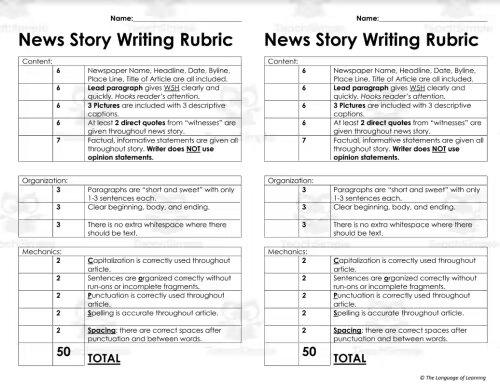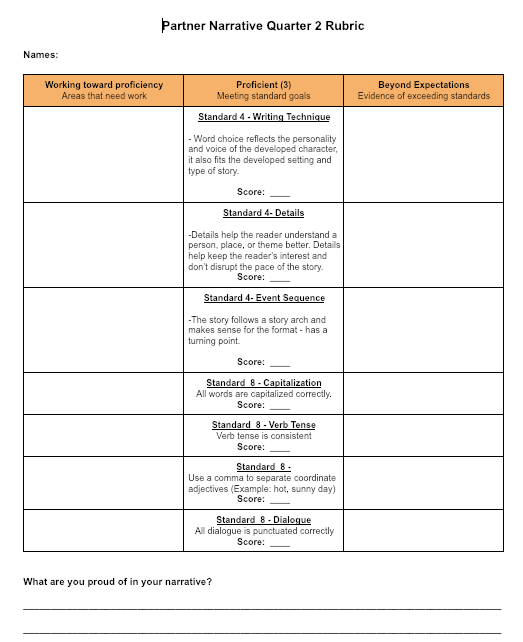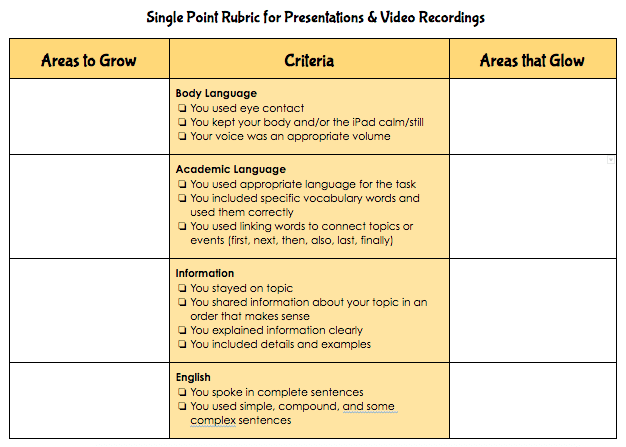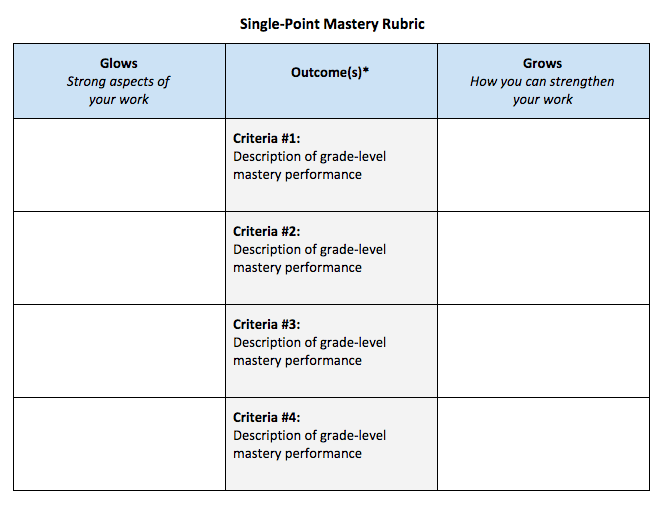Most teachers are familiar with using rubrics to assess their students. Frequently, these rubrics are in one of two styles: holistic or analytic. But a newer style of rubric is gaining in popularity: the single point rubric.
To help us understand how a single-point rubric works, let’s first discuss what defines holistic and analytic rubrics.
Table of Contents
- Holistic Rubrics
- Analytic Rubrics
- What is a Single Point Rubric?
- Benefits of Single Point Rubrics
- How to Use Single Point Rubrics
- How to make a Single Point Rubric
- Single Point Rubric FAQ
Holistic Rubrics
Categorize student performance into different levels. A holistic rubric would describe what each level or grade of performance would generally look like. These rubrics are the most broad of the three. They are often used for standardized tests, as well as to assess writing.
An example of a holistic rubric is the method by which the essay portion of the SATs is scored 0-6. It’s best used when there isn’t a lot of time available for specific feedback. This makes sense for the SATs, which must be graded in high volumes, and by people who will never even work with the students they are evaluating.
This News Story Writing Rubric for grades 3, 4, 5, and 6 is also an example of a holistic rubric.
The downfall of using holistic rubrics is that they provide very little feedback. While each level may have a general description of positives and negatives to qualify a student’s work for said category, the student will not necessarily have any way of knowing which of these positives or negatives specifically apply to their work. Students aren’t likely to learn much from holistic rubrics.
Analytic Rubrics
Take holistic rubrics a step further, and provide different categories of assessment within each grading level. An analytic rubric would describe possible characteristics of a job well-done, as well as the possible ways a student might underperform. These rubrics can get highly specific.
Because of this, an analytic rubric may be preferable in a lot of cases to a holistic rubric. Specific feedback can teach a student what they did well and where they can improve. However, analytic rubrics have their own setbacks to consider. First of all, because they aim to detail every possible scenario for achievement and failure, they take forever for a teacher to write. This is also somewhat of an impossible task. There’s no way to guarantee you’ve come up with every single scenario to describe a student’s performance. You will probably still have to make some notes in the margins to accurately describe to students what you’ve observed. This will further take up your time, and might leave you feeling like this type of rubric isn’t worth it. The other thing teachers have to be realistic about with analytic rubrics is their students’ likeliness to even read that volume of text. While an analytic rubric may contain excellent, specific feedback, it’s not doing much good if students don’t absorb it.
This Art Class Rubric for young elementary students is an example of an analytic rubric.
What is a Single Point Rubric?
Single Point Rubrics
As the name implies, simplifies the assessment process. They are similar to analytic rubrics in that they describe an ideal outcome for students’ work. But that’s where they begin and end. There is no lengthy text describing what lesser and lesser degrees of success look like. And they do not include a grade as a holistic rubric would. Single point rubrics focus simply on what the desired outcome would look like, and leaves room for teachers to describe to students individually what the positives as well as areas for improvement are in their work.
Benefits of Single Point Rubrics
single point rubrics provide high-quality feedback.
They are the best option in any situation that benefits from feedback. And that is most situations. The personally-tailored feedback provided in a single point rubric will be the highest quality of the three types of rubric. This option is flexible, without sacrificing clarity.
When compared to an analytic rubric, you can easily see how a single point rubric saves time.
You do not have to come up with descriptions of possible ways to fail or to be less successful. You simply focus on the desired outcome. From there, you’ll write individual feedback to students. But considering you may have been stuck having to do that anyway if students perform outside of the expectations you predicted and described in creating your rubric, this does not add additional grading time.
Compared again to an analytic rubric, your concise and specific feedback will be less verbose.
The simplified and easy-to-read text means your students are much more likely to actually read, reflect upon, remember, and ultimately absorb the feedback. A win for both you and your students.
A single point rubric also takes students’ minds off the idea of ranking.
We all have a tendency to compare ourselves to others. Grades can give students anxiety, and encourage them to covet high rankings over the learning itself. A single point rubric doesn’t simply spell out, “Sally did better than Jimmy.” Instead, it encourages students to focus on their own progress–a more useful and healthy mindset.
Students achieve more with feedback.
Simple assessments of “good” or “bad” aren’t helpful when it comes to growth and learning. Students need to know what they can improve on and how. Just as importantly, they need to know what they did well so they can continue doing it. Feedback-focused assessments are the most conducive to improvement.
Motivation increases with feedback.
Much like how students are motivated by specific learning targets (link to learning targets article), specific feedback from a single point rubric makes the path forward clear and achievable for students. That is highly motivating! Vague scoring does not inspire students to take action to nearly the same degree.
How to Use Single Point Rubrics
Most common, single point rubrics help teachers evaluate students. The evaluation is then given to the student to read and learn from. You can also make great use of single point rubrics by giving them to your students to conduct self-assessments.
Reiterating the benefits of learning targets (link to article), a single point rubric self-evaluation is a great way for students to take responsibility for their own learning, feel more motivated, and achieve even better results.
Another useful practice for students is to use single point rubrics to conduct peer feedback. Giving effective feedback–as you’ve probably seen for yourself–is not easy! It comes with practice. This is a skill that will be handy in students’ future professional and personal lives, and will help them learn more about what to strive for in their own work.
How to make a Single Point Rubric
The beauty of single point rubrics is they are not complicated! Not for the teacher, and not for the student. Let’s fist take a look at some examples.
Single Point Rubric Examples
Check out this fun example of a single point rubric using the analogy of breakfast in bed from Cult of Pedagogy.
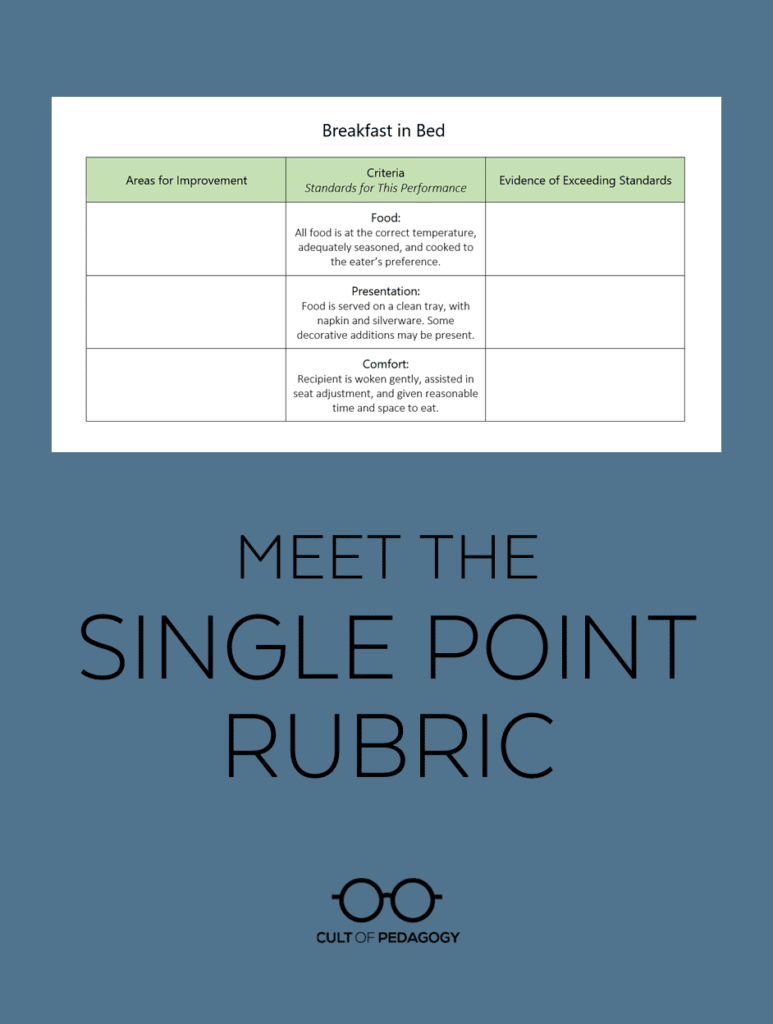
Here’s a single point rubric example for narrative writing from teacher Pernille Ripp.
And here is a single point rubric for evaluating presentations and video recordings from teacher Michelle Gill.
Single Point Rubric Template
Now that you’ve reviewed some examples, check out this blank template to help you create your own single point rubric.
Single Point Rubric FAQ
Mary Dietz gave a presentation on single point rubrics at a conference in the year 2000. A researcher by the name of Jarene Fluckiger was at that conference, and she later published a paper detailing Dietz’ presentation, along with a study on the effectiveness of single point rubrics. The single point rubric has been gaining in popularity ever since.
Fluckiger’s 2010 findings noted that students achieved more with the use of single point rubrics. The effects were even greater when students helped to create them, as well as used them to self-assess their work.
Using a single point rubric could still end up being a lot of time-consuming writing for teachers. If an analytic rubric thoroughly predicts and describes potential outcomes of student performance, then teachers can save time using them over potentially writing the same feedback on repeat to many students.

